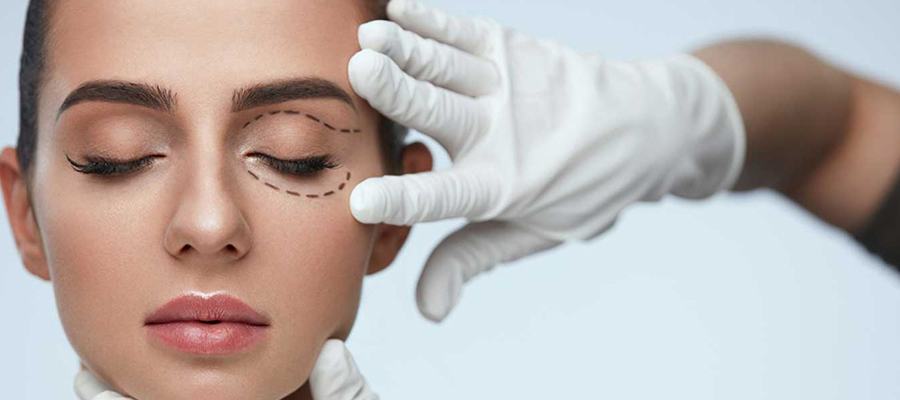
Estimated reading time: 3 minutes and 47 seconds
Droopy Eyelid Treatment
Effective Droopy Eyelid Treatment at Aktif International Hospitals
Droopy eyelids, medically known as ptosis, can occur due to various factors such as aging, genetics, injury, or neurological conditions. Ptosis can affect one or both eyelids, causing them to sag or droop, which may obstruct vision, affect appearance, and cause discomfort or self-consciousness. At Aktif International Hospitals, we offer effective droopy eyelid treatment options to restore eyelid function, improve vision, and enhance facial aesthetics for our patients.
Frequently Asked Questions
What causes droopy eyelids (ptosis)?
Droopy eyelids, or ptosis, can be caused by several factors, including:
- Aging: As we age, the muscles and tissues that support the eyelids may weaken or stretch, causing them to droop or sag.
- Genetics: Some individuals may inherit a predisposition to ptosis, with eyelid drooping occurring at a younger age due to genetic factors.
- Eyelid trauma: Trauma or injury to the eyelid muscles or nerves can result in droopy eyelids, either immediately following the injury or developing gradually over time.
- Neurological conditions: Neurological disorders such as myasthenia gravis, Horner’s syndrome, or third nerve palsy can affect the nerves that control eyelid movement, leading to ptosis.
- Congenital ptosis: Some individuals may be born with ptosis due to developmental abnormalities or muscle weakness present from birth.
How is droopy eyelid (ptosis) diagnosed?
Droopy eyelid, or ptosis, is typically diagnosed through a comprehensive eye examination and evaluation by an ophthalmologist or oculoplastic surgeon. Diagnostic tests may include:
- Visual acuity testing: Visual acuity testing assesses the clarity and sharpness of vision to determine if ptosis is affecting visual function.
- Eyelid measurements: Eyelid measurements may be taken to quantify the degree of eyelid drooping and assess its impact on vision and aesthetics.
- Evaluation of eyelid movement: Evaluation of eyelid movement involves assessing the strength and coordination of the muscles responsible for lifting the eyelids to determine the underlying cause of ptosis.
- Assessment of eyelid function: Assessment of eyelid function may include testing the levator muscle function, assessing eyelid symmetry and contour, and evaluating for signs of muscle weakness or nerve dysfunction.
What are the treatment options for droopy eyelids (ptosis)?
Treatment for droopy eyelids, or ptosis, depends on the underlying cause, severity of symptoms, and patient preferences and may include:
- Eyelid surgery (blepharoplasty): Eyelid surgery, or blepharoplasty, is a surgical procedure that involves tightening or repositioning the muscles and tissues of the eyelids to correct ptosis and restore eyelid function and appearance.
- Frontalis sling surgery: Frontalis sling surgery is a procedure used to treat severe ptosis by creating a sling or suspension mechanism using synthetic materials or natural tissues to elevate the eyelids and improve eyelid opening.
- Botulinum toxin injections: Botulinum toxin injections, such as Botox or Dysport, may be used to temporarily elevate the eyebrows and reduce the appearance of droopy eyelids by weakening the muscles that pull the eyebrows downward.
- Observation and monitoring: In mild cases of ptosis where vision is not significantly affected and there are no cosmetic concerns, observation and monitoring may be recommended to assess for progression of symptoms over time.
Is droopy eyelid (ptosis) treatment safe?
Droopy eyelid, or ptosis, treatment is generally safe when performed by a qualified and experienced ophthalmologist or oculoplastic surgeon. Surgical procedures such as eyelid surgery or frontalis sling surgery carry potential risks and complications, which will be discussed with you by your healthcare provider before the procedure. However, with proper evaluation, planning, and surgical technique, the risks associated with ptosis treatment can be minimized, and the benefits can outweigh the potential complications.
Trust Aktif International Hospitals for Effective Droopy Eyelid Treatment
At Aktif International Hospitals, we understand the impact that droopy eyelids can have on vision, appearance, and quality of life. Our team of experienced ophthalmologists and oculoplastic surgeons is dedicated to providing effective droopy eyelid treatment options tailored to meet the unique needs of each patient. Whether you require surgical intervention, non-surgical treatment, or ongoing monitoring and support, you can trust Aktif International Hospitals to deliver high-quality care with compassion and expertise. Schedule your consultation with us today and take the first step toward achieving optimal eyelid function and aesthetics with Aktif International Hospitals.
Author: Erkan Kural


 TR
TR FR
FR ES
ES RU
RU RO
RO